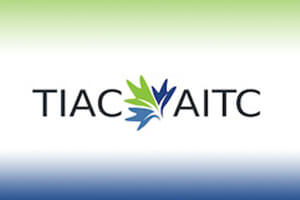New collaboration to better protect Canadians from the impacts of pyrrhotite
Partnership between the National Research Council of Canada, the Régie du bâtiment du Québec and Université Laval
The Voice of Canada News:
A collaborative effort was launched between the National Research Council of Canada (NRC), the Government of Quebec and Université Laval to find a solution to the problems stemming from the presence of pyrrhotite in concrete.

The Honourable François-Philippe Champagne, Minister of Infrastructure and Communities, on behalf of the Honourable Navdeep Bains, Minister of Innovation, Science and Economic Development and Andrée Laforest, Minister of Municipal Affairs and Housing and Minister Responsible for the Saguenay–Lac-Saint-Jean Region today announced the creation of a research chair between the NRC and Université Laval with the purpose to eliminate the problems caused by pyrrhotite damage to concrete. This project, valued at $4.9 million, will run for four years. Funding will be provided by the NRC and the Régie du bâtiment du Québec (RBQ) and its partners, including the Société d’habitation du Québec (SHQ) and Garantie de construction résidentielle.
This project will help professors at the Department of Geology and Geological Engineering at the Faculty of Science and Engineering of the Université Laval and co-holders of the research chair, Josée Duchesne and Benoît Fournier, as well as NRC scientists, to establish acceptable limits for the content of various sulphurs, including pyrrhotite, in Canadian concrete aggregates. It will also enable the development of fast, inexpensive and reliable test methods for detecting potentially hazardous sulphide levels in concrete aggregates; and identify preventative measures for the safe use of sulphur concrete aggregates.
The ultimate goal of this research chair will be to provide technical solutions to the Canadian Standards Association so that it can update the standards on concrete aggregates. The results of this collaboration will be realized once the standards have been updated and incorporated into national codes.
National Research Council Canada
NRC is the Government of Canada’s largest research organization. This is a key element of the Innovation and Skills Plan and the commitment made in the 2018 Budget to help Canadian researchers build a more innovative economy. To help position Canada as a global leader, the NRC is expanding its collaboration with regional ecosystems and with universities, polytechnic institutions and colleges, building partnerships across the country.
Régie du bâtiment du Québec
With a presence across Quebec, the RBQ’s mandate is to oversee the quality of construction work and the safety of people in the fields of construction, electricity, plumbing, gas, oil equipment, pressurized devices, elevators, ski lifts, amusement parks and rides and swimming areas. RBQ oversees the enforcement of the Building Act and its related regulations in the various technical areas of its jurisdiction. It is also responsible for regulating new residential buildings.
Université Laval
Driven by innovation and the pursuit of excellence, Université Laval is one of Canada’s leading research universities, ranking 8th with $356 million in research funding last year. It has 3,730 professors, lecturers and other academic and research staff who share their knowledge with over 43,000 students, 25% of whom are enrolled in graduate studies. The oldest francophone university in North America, Université Laval has so far trained more than 300,000 people who each contribute in their own way to the advancement of society.
Quotes
“This collaboration between the National Research Council of Canada and Université Laval will ensure the safety of Canadians and minimize the future economic impact of pyrrhotite in concrete in Trois-Rivières, in Quebec and across the country.”
— The Honourable François-Philippe Champagne, Minister of Infrastructure and Communities and member of Parliament for Saint-Maurice–Champlain
“This new research chair will lead to new construction standards that will increase safety and will solve a real problem. Interactions between NRC scientists and researchers at Université Laval will advance scientific knowledge and construction technologies. This is an example of collaboration at its best”.
— The Honourable Navdeep Bains, Minister of Innovation, Science and Economic Development
“It is with great pleasure that the Québec Government, in collaboration with the Régie du bâtiment du Québec and its partners, participates in the creation and funding of the Université Laval’s research chair. This investment marks a continuation of the Government’s efforts to help the victims of pyrrhotite. After funding the first stage of research and implementing compensation programs, we now launch the second stage, which will contribute to the evolution of technical knowledge in this field. We will then be able to adopt new standards so that we can better protect the citizens, thus preventing disastrous events such as what families of Trois-Rivières had to go through.”
— Andrée Laforest, Minister of Municipal Affairs and Housing and Minister Responsible for the Saguenay-Lac-Saint-Jean Region
“The Université Laval has world-renowned expertise in testing protocols used to determine whether concrete aggregates contain harmful sulphide minerals. This first research chair in partnership with NRC will help train the next generation in this field and carry out the additional work that will enable the results of this research to be implemented in the construction standards and codes for concrete buildings and infrastructure across the country.”
— Eugénie Brouillet, Vice President, Research, Creation and Innovation, Université Laval
Quick facts
- Pyrrhotite is an iron sulfide that may be present in concrete aggregates. Adverse reactions between it and the cement in concrete caused damage to thousands of buildings in the Trois-Rivières region.
- Although there are tests for detecting reactive sulphides in concrete aggregates, they have not yet been fully perfected or validated.
The results of this research chair will be a world first. The problems related to sulphide damage to concrete affect other countries such as the United States, Norway, Ireland and South Africa.



